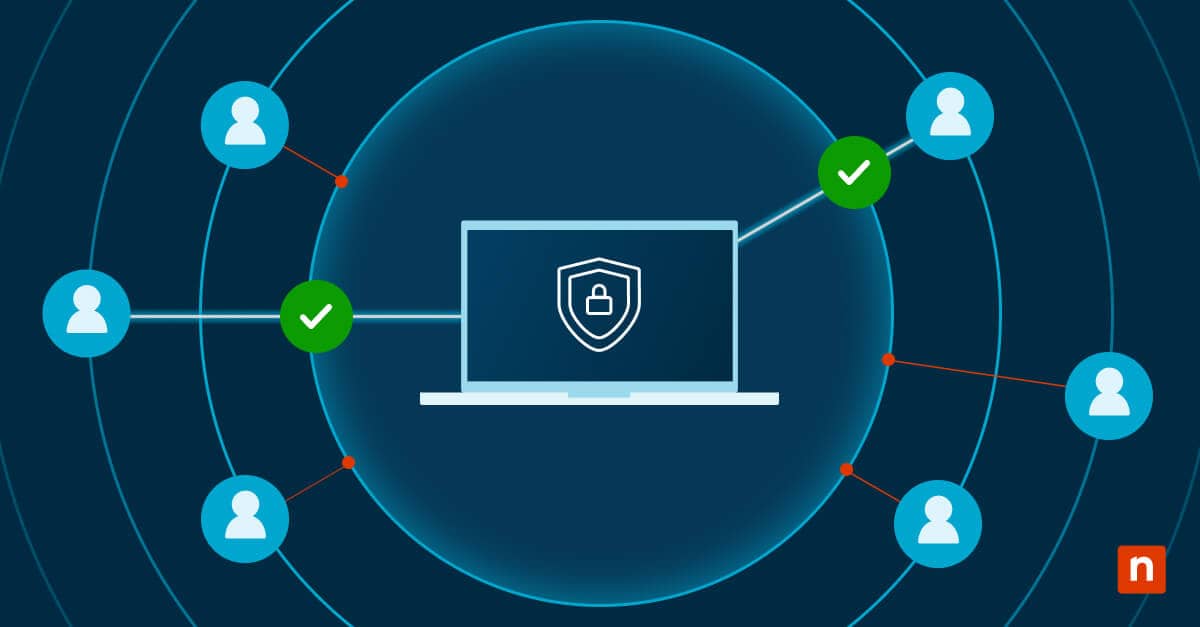Server virtualization is a transformative technology that has revolutionized data centers, streamlined operations, and enhanced efficiency. This guide aims to provide an understanding of server virtualization, its significance, benefits, and its pivotal role in modern IT environments.
What is server virtualization?
Server virtualization is the process of creating virtual instances of a number of physical servers, known as virtual machines (VMs), on one physical system. Each VM operates as an independent server, complete with an operating system, applications, and network configurations. Server virtualization abstracts and decouples the software environment from the underlying hardware, allowing multiple VMs to run on the same physical server without interference.
Virtualization: Business impact
Before we examine the intricacies of server virtualization, it is important to understand the impact of the virtualization revolution on businesses. Recent statistics paint a compelling picture:
- According to Gartner, by 2025, 70% of organizations will be running two or more virtual machines (VMs) on the same physical server, up from less than 20% in 2019.
- The global server virtualization market size is projected to reach $24.6 billion by 2028.
- Server virtualization has become a cornerstone of cloud computing. Leading cloud providers like AWS, Azure, and Google Cloud rely heavily on server virtualization to deliver scalable and cost-effective services.
Server virtualization represents a paradigm shift in the world of computing. It empowers organizations to consolidate multiple physical servers onto a single host machine, leading to improved resource utilization, scalability, cost savings, and simplified management.
The difference between physical and virtual servers
To understand the server virtualization concept, it is helpful to differentiate between physical servers and virtual servers.
Physical servers
- Each physical server is a standalone machine with dedicated hardware resources.
- Physical servers have limited scalability and are resource-intensive.
- Maintaining multiple physical servers requires significant space, power, cooling, spare components, and staff.
Virtual servers
- VMs share the same physical server’s hardware resources, including CPU, RAM, and storage.
- VMs are highly scalable and flexible, allowing resources to be allocated dynamically.
- Virtualization reduces hardware costs, energy consumption, and data center footprint.
Understanding how virtualization compares to physical servers is essential for making informed decisions, but virtual servers always offer greater cost efficiency and flexibility.
| Virtual servers | Physical servers | |
| Resource efficiency | Efficient resource utilization among VMs. | Dedicated resources for each server. |
| Scalability | Easily scaled up or down to adapt to workload changes. | Limited scalability; adding new servers can be costly. |
| Cost savings | Reduced hardware, energy, and operational costs. | Higher hardware and operational costs. |
| Simplified management | Centralized management and control of VMs. | Individual server management. |
| Disaster recovery | Robust backup, recovery, and replication options. | Traditional backup and recovery processes. |
The only use cases where physical servers outperform virtual machines are either extremely high-performance systems where running multiple VMs on the same host machine would not be viable, or highly secure environments with different classifications of systems and data requiring segregation.
How server virtualization works
Understanding the setup of a virtualization platform, as well as the virtualization of a server, is fundamental to harnessing the technology effectively.
Step-by-step explanation of the server virtualization process
- Hypervisor installation: The server virtualization journey begins with the installation of a hypervisor on the physical host. The hypervisor is the software responsible for creating and managing VMs.
- VM creation: After installing the hypervisor, administrators can create one or more VMs. Each VM is configured with its operating system, applications, and network settings.
- Resource allocation: The hypervisor allocates hardware resources, like the CPU, RAM, and disk, to each VM based on predefined specifications or dynamic resource allocation policies.
- Isolation and security: VMs run independently and are isolated from one another. This isolation improves security and prevents one VM from affecting others.
- Centralized management: Administrators can manage VMs centrally using tools provided by the hypervisor. Tasks include VM provisioning, monitoring, and resource adjustments.
- Snapshot and cloning: VMs can be snapshotted or cloned to create backups or duplicate instances for testing or scaling purposes.
The hypervisor’s role in managing virtual environments
Hypervisors are the core of server virtualization. They serve as the intermediary between physical hardware and VMs, facilitating the creation, management, and efficient operation of virtualized environments. Hypervisors fall into one of two categories:
- Type 1 hypervisor: Type 1 hypervisors run on the underlying physical hardware, eliminating the need for a host operating system. This results in higher performance and resource efficiency. Examples include VMware and Microsoft Hyper-V.
- Type 2 hypervisor: Type 2 hypervisor software runs on a host operating system. While they are easier to set up, they introduce some performance overhead due to the host OS. Examples include VMware Workstation and Oracle VirtualBox.
One of the key functions of the hypervisor is resource allocation. It ensures that each VM receives its share of physical resources while preventing resource contention. Resource allocation can be configured statically or dynamically, depending on the hypervisor and specific use cases.
Types of server virtualization
Server virtualization has evolved over the years, with a number of technologies and approaches proving popular.
Full virtualization
Full virtualization is the most common type of server virtualization. It involves the complete abstraction of the physical hardware, allowing multiple VMs to run different operating systems simultaneously. Key characteristics of full virtualization include:
- Complete isolation: VMs are fully isolated from each other and the host system.
- Operating system flexibility: VMs can run different operating systems, such as Windows, Linux, or even legacy systems.
- Performance overhead: Full virtualization introduces a slight performance overhead due to the emulation of hardware.
Para-virtualization
Para-virtualization is an alternative approach to virtualization that modifies guest operating systems to be aware of the virtualization layer. This awareness results in improved performance and efficiency compared to full virtualization. Key characteristics of para-virtualization include:
- Enhanced performance: Guest operating systems are optimized for virtualization, reducing overhead.
- Cooperation with hypervisor: Para-virtualized guests communicate directly with the hypervisor for resource management.
- Limited guest OS compatibility: Para-virtualization requires modified guest operating systems, limiting the options available.
OS-level virtualization
OS-level virtualization, also known as containerization, operates at the application level rather than the hardware level. It allows multiple isolated user spaces, known as containers, to coexist within a single operating system instance. Key characteristics of OS-level virtualization include:
- Efficiency: Containers share the host OS kernel, making them highly efficient and lightweight.
- Fast deployment: Containers can be created and deployed rapidly, making them ideal for microservices architectures.
- Limited isolation: Containers share the same OS kernel, which can pose security risks if not properly configured.
Benefits of server virtualization
The adoption of server virtualization brings a multitude of benefits to organizations, making it the foundation of modern IT strategies, either in the data center or the cloud.
Improved resource utilization
Server virtualization enables the efficient allocation of CPU, RAM, and storage resources to multiple VMs. This leads to optimal resource utilization, reducing the risk of resource shortages and ensuring that resources are put to work effectively.
By consolidating multiple VMs onto a single physical server, organizations can significantly reduce their hardware infrastructure requirements. Fewer physical servers translate into lower hardware acquisition and maintenance costs. Additionally, the reduced number of servers results in energy savings and a smaller carbon footprint.
Enhanced scalability and flexibility
Server virtualization allows organizations to dynamically allocate resources to VMs based on workload demands. This means that during periods of high activity, VMs can receive additional resources to maintain performance, and during periods of low activity, resources can be scaled back to save power and costs. This agility ensures that IT resources can align with business needs in real-time.
Cost savings and consolidation
Server consolidation is a primary driver of cost savings. By migrating multiple physical servers onto a single, powerful host machine, organizations reduce hardware acquisition, maintenance, and operational costs. Fewer servers also mean less space and cooling requirements in data centers.
Simplified management and disaster recovery
Server virtualization centralizes the management of VMs. Administrators can control and monitor VMs from a single interface, streamlining routine tasks and improving overall efficiency. This centralized control simplifies IT management and reduces the risk of errors.
Virtualization platforms also offer robust tools for backup, recovery, and replication. VM snapshots and cloning make it easy to create backups, test disaster recovery plans, and replicate VMs to remote locations for data redundancy.
Implementing server virtualization
Implementing server virtualization requires careful planning and consideration of several factors. The steps involved in deploying virtualization solutions are as follows:
- Assessment: Begin with a thorough assessment of your existing IT infrastructure, workloads, and business requirements.
- Objective setting: Define clear objectives for virtualization, such as resource optimization, cost reduction, or disaster recovery.
- Platform selection: Choose a virtualization platform that aligns with your needs. Options include VMware, Microsoft Hyper-V, and open-source solutions.
- Hardware compatibility: Ensure that your hardware is compatible with the chosen virtualization platform.
- Hypervisor installation: Install and configure the hypervisor on host machines.
- VM creation: Create VMs based on your workload requirements.
- Resource allocation: Define resource allocation policies and configurations for VMs.
- Live migration: Migrate workloads from physical servers to VMs.
Considerations when selecting a virtualization platform
Choosing the right virtualization platform is critical to success. Consider the following factors when making your selection:
- Compatibility: Ensure compatibility with your existing hardware and software stack.
- Scalability: Evaluate the platform’s scalability to accommodate future growth.
- Cost: Consider both upfront costs and ongoing licensing fees.
- Performance: Assess the platform’s performance and resource management capabilities.
- Management tools: Examine the management tools and interfaces provided by the platform.
- Support and community: Consider the availability of support and a thriving user community.
Server virtualization should seamlessly integrate with your existing IT infrastructure. Ensure that your virtualized environment can communicate with other systems and that backup, monitoring, and security solutions are compatible with the virtualization platform.
Best practices for server virtualization
Optimizing the performance and reliability of your virtualized environment requires adherence to the following best practices:
Optimize VM performance and resource allocation
- Regularly monitor VM resource utilization to identify bottlenecks and resource-hungry VMs.
- Use resource allocation techniques such as dynamic resource pools to ensure efficient resource utilization.
- Implement proper storage strategies, including high-speed storage for critical workloads.
Monitor and manage virtualized environments effectively
- Deploy robust virtual machine monitoring solutions to keep a close eye on VM performance, resource utilization, and potential issues.
- Establish clear policies and procedures for VM provisioning, modification, and decommissioning.
- Implement automation wherever possible to streamline routine management tasks.
Implement security measures to protect virtualized workloads
- Harden VMs by applying security best practices such as patch management, antivirus, and intrusion detection.
- Isolate VMs as needed to prevent unauthorized access between VMs.
- Implement network security measures, including firewalls and network segmentation, to protect VMs from external threats.
Debug common issues
- Develop a comprehensive troubleshooting strategy that includes monitoring, logs, and performance analysis tools.
- Document your virtualization environment, including configurations and changes.
- Train IT staff in virtualization best practices and issue resolution techniques.
Optimize business operations with virtualization
As technology becomes ever more complex and costly, virtualization empowers organizations to optimize business operations. It provides the foundations to achieve scalability, fortify cyber security posture, and retain the flexibility required to succeed today.
By following this guidance and the best practices provided, IT professionals can embark on their server virtualization journey with confidence. Organizations that harness the potential of virtualization effectively will be more resilient, competitive, and better equipped to adapt to evolving business challenges. Once your virtualization journey is underway, keep on top of performance and maintenance with NinjaOne’s VM monitoring and management solution.







